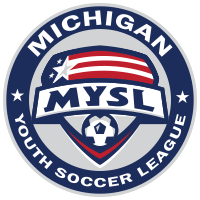Baseline testing should be given by a health professional. You may find a health professional certified in this testing at a children’s hospital or a doctor’s or trainer’s office. The post-injury test, evaluation and return-to-play approval should also be given …
Archives: Player Safety
You are here:
- Home
- FAQ
Concussion discussions have evolved over the years. What started out over a decade ago as “There might be a problem,” has changed to both the Recognize to Recover (R2R) initiative along with practice and play recommendations put forth by U.S. …
Archives: Player Safety
You are here:
- Home
- FAQ
You should know whether any of your players suffer from:
- Asthma
- Diabetes
- Seizures
- Allergies
- Previous concussions
Get to know them!
…
Archives: Player Safety
You are here:
- Home
- FAQ
Did you know?
- Loss of consciousness is not a necessary symptom of a concussion.
- The many different lobes of the brain bring on the many different symptoms of a concussion.
- Once concussed, another concussion is more likely, especially if brought
Archives: Player Safety
You are here:
- Home
- FAQ
There are six steps to recovery from a concussion:
- Rest, quiet
- Light aerobic activity
- Sports-specific activity
- Non-contact training drills
- Full contact practice
- Full contact games
Allowing 24 symptom-free hours before progressing to the next recovery step means that a player …
Archives: Player Safety
You are here:
- Home
- FAQ
Coaches will need a doctor’s opinion to diagnose a brain bleed. The conservative approach for a coach to give NO ASPIRIN and NO IBUPROFEN, both of which would exacerbate a bleed if there is one.
The coach should watch the …
Archives: Player Safety
You are here:
- Home
- FAQ
There are differing approaches needed for these two very different collapses.
Contact Collapse: For the most part, a coach will see a head or abdominal injury happen (with aerial challenges being the most dangerous plays). Be warned in this …
Archives: Player Safety
You are here:
- Home
- FAQ
There are two types of cramping that can be caused by heat:
- Sudden cramping, described as a muscle overload, is localized and in one muscle group. It can be helped by stretching.
- When cramping is widespread, intermittent, bilateral and accompanied
Archives: Player Safety
You are here:
- Home
- FAQ
Heat-related injuries and deaths are rising, and they are preventable. Risk factors include:
- Heat/humidity
- Poor player preparation
- Excessive exertion
- Poor hydration
- Lack of recovery time (same-day sessions)
- Player fitness
- Clinical risks (e.g., player illness or meds)
Possible actions to take:…
Archives: Player Safety
You are here:
- Home
- FAQ
Even doctors have a difficult time assessing whether a player has been concussed. And concussions all present differently. With that being said, what should a coach look for?
- Confusion/difficulty with orientation
- Nausea
- Blurred vision
- Dizziness
- Poor concentration (unable to repeat

